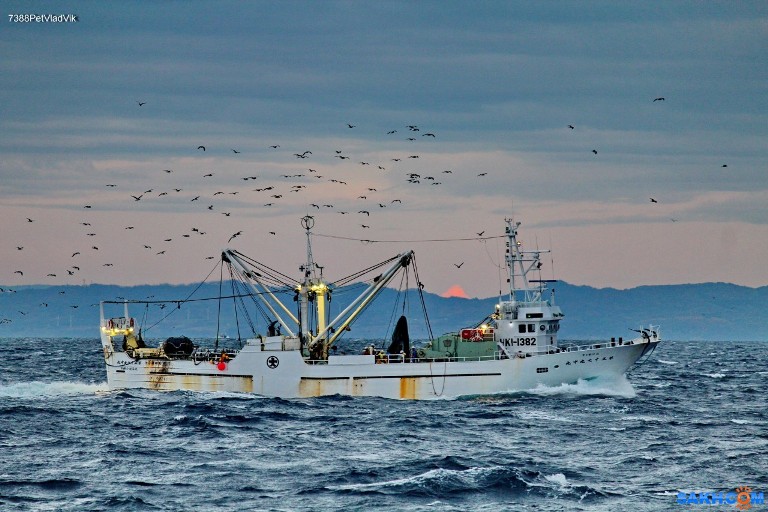An innovative study by Sentinel-1 and AI (European Space Agency) combining satellite data and artificial intelligence has shed light on the number of ships, wind turbines and oil platforms at sea. Shockingly, the study shows that about 75% of the world’s industrial fishing vessels were previously hidden from publicly available tracking systems. The study, published recently in the journal Nature, was conducted by Global Fishing Watch, an organization that seeks to improve ocean governance through increased transparency of human activity at sea.
Not all vessels are required by law to report their location, but vessels not included in public monitoring systems, the so-called “dark fleet,” can pose problems for the protection and management of natural resources. Using five years of radar data from the Copernicus Sentinel-1 mission and some optical data from the Copernicus Sentinel-2 mission, as well as GPS information, Global Fishing Watch researchers were able to identify ships that had not reported their position.
Then, by applying machine learning to the data, the researchers were able to infer which vessels were fishing. The study period spanned 2017–2021 and covered the coastal waters of six continents, where the vast majority of fishing and maritime infrastructure is located. They found numerous unidentified fishing vessels in many marine protected areas, as well as high concentrations of vessels in many countries’ waters that had previously been shown to have little or no vessel activity by public monitoring systems. It also turned out that more than 25% of transport and energy vessels were also missing tracking systems.
“A new industrial revolution has begun in our seas, and has gone unnoticed until now,” said David Kroodsma, director of research and innovation at Global Fishing Watch. “On land, we have detailed maps of almost every road and building on the planet. By contrast, economic growth in our oceans is largely hidden from the public. This research helps address blind spots and sheds light on the breadth and intensity of human activity at sea.”
Fernando Paolo, senior machine learning engineer at Global Fishing Watch, added: “Historically, vessel activity has been poorly documented, limiting our understanding of how the world’s largest public resource, the ocean, is used. “By combining space technology with cutting-edge machine learning, we have mapped undetected industrial activity at sea on a scale never seen before.”
“By discovering unregistered vessels, we have created the most comprehensive public picture of the world’s industrial fisheries.” ESA Copernicus Sentinel-1 mission director Nuno Miranda said: “We are stunned by the results of the study. I don’t think anyone expected that 75% of ships at sea do not broadcast their position. “This mission truly demonstrates how the radar’s all-weather, day and night capabilities, coupled with its systematic and global observations, can better understand the extent of human impacts on the environment and natural resources.”
In addition to the implications this has for targeting vessels that may be engaged in illegal fishing, these findings will also help to better understand greenhouse gas emissions at sea. The study also looked at offshore infrastructure such as wind turbines and oil platforms. During the study period, oil installations increased by 16% and wind turbines more than doubled. By 2021, the number of turbines has exceeded the number of oil platforms. China’s offshore wind industry has shown the most impressive growth, increasing ninefold between 2017 and 2021.





